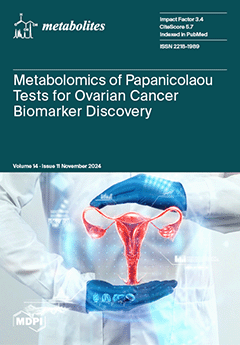Objectives: Identifying reliable biomarkers to predict mortality in critically ill patients is crucial for optimizing management in intensive care units (ICUs). Inflammatory and metabolic markers are increasingly recognized for their prognostic value. This study aims to evaluate the association of various inflammatory and metabolic markers with ICU mortality. Methods: This prospective observational study was conducted from January 2023 to January 2024 in the City Hospital’s ICU. A total of 160 critically ill patients were enrolled. Laboratory parameters, including white blood cell (WBC) count, red cell distribution width (RDW), platelet count, neutrophil count, mean platelet volume (MPV), monocyte count, lymphocyte count, procalcitonin (PCT), C-reactive protein (CRP), calcium (Ca
++), and vitamin D levels, were analyzed. Additionally, ratios such as the platelet-to-lymphocyte ratio (PLR), neutrophil-to-lymphocyte ratio (NLR), systemic inflammatory index (SII), and pan-immune-inflammation value (PIV) were calculated. Plasma levels of Gla-rich protein (GRP) and dephosphorylated uncarboxylated matrix Gla protein (dp-ucMGP) were measured using ELISA. Results: The mean age of the patients included in the study was 60.5 ± 15.8 years. Cardiovascular disease was present in 72 patients (45%), respiratory system disease in 58 (36%), and chronic kidney disease (CKD) in 38 (24%). Additionally, 61 patients (38%) had diabetes, and 68 (42%) had hypertension. Inflammatory markers, including PLR, NLR, and PIV, were all significantly higher in non-survivors, while calcium and vitamin D levels were lower (
p < 0.05). Higher WBC, RDW, neutrophil count, PLR, NLR, PIV, CRP, procalcitonin, GRP, and dp-ucMGP levels were positively correlated with longer hospital stays and increased mortality. In contrast, platelet and lymphocyte counts were negatively correlated with both outcomes (
p < 0.05). Vitamin D levels showed an inverse relationship with both hospital stay and mortality, indicating that lower levels were associated with worse outcomes (
p < 0.05). In multiple logistic regression analysis, elevated WBC count (OR = 1.20,
p = 0.02), RDW (OR = 1.35,
p = 0.01), neutrophil count (OR = 1.25,
p = 0.01), MPV (OR = 1.20,
p = 0.02), PLR (OR = 1.30,
p = 0.01), NLR (OR = 1.40,
p = 0.001), PIV (OR = 1.50,
p = 0.001), CRP (OR = 1.32,
p = 0.01), procalcitonin (OR = 1.45,
p = 0.001), GRP (OR = 1.40,
p = 0.001), and dp-ucMGP (OR = 1.30,
p = 0.001) levels were significantly associated with increased mortality. Conclusions: Inflammatory and metabolic markers, particularly NLR, PLR, PIV, GRP, and dp-ucMGP, are strong predictors of mortality in ICU patients. These markers provide valuable insights for risk stratification and early identification of high-risk patients, potentially guiding more targeted interventions to improve outcomes.
Full article






